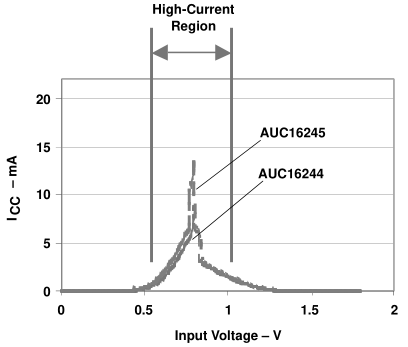Other Parts Discussed in Thread: SN74AUP1G14
Hi,
I have used SN74AUP3G14 in one of my logic circuits and is powered with 3.3V. However, I have a RC timing network in its input due to which the input transition time is extremely slow. The input will rise and fall from 0V to 3.3V in about 25 seconds. I used it in this way as the SN74AUP3G14 has schmitt inputs. I looked at its datasheet, but in the revision history section, it said that "Deleted input transition rise or fall rate (Δt/Δv) paramater from Recommended Operation Conditons table". So, my question is will I be able to use it with such slow rise and fall rates? Will it impact any damage to the SN74AUP3G14? Or will there be any abnormal performance of the logic gate? Please help.
Thanks.



